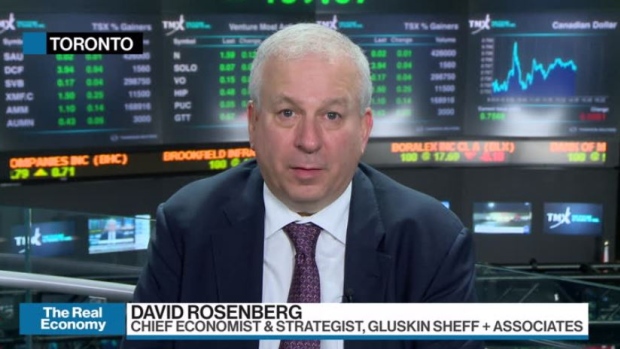Jan 9, 2019
Treat rallying loonie with a 'heavy dose of skepticism': Rosenberg

The Canadian dollar may have jumped after the Bank of Canada kept its overnight policy rate steady on Wednesday, but David Rosenberg expects dark days ahead for the loonie.
“I would just say to any business out there in the financial sector and in the non-financial sector: Treat this rally in the Canadian dollar [over] the last couple weeks with a heavy dose of skepticism,” Rosenberg, the chief economist at Gluskin Sheff + Associates, told BNN Bloomberg in an interview on Wednesday.
“I think that we should continue to have a forecast of a weaker Canadian dollar and however that affects your business as an importer or an exporter to be aligned with the view that the Canadian dollar is going to be weakening from where it is today for most of the year.”
The loonie jumped to as high as 75.73 U.S. cents after the Bank of Canada announced it is maintaining its benchmark interest rate at 1.75 per cent on Wednesday morning. The Canadian dollar hit a 2019 low of 73.23 on Jan. 2.
“The Canadian dollar rallied on the statement because the narrative was that the bank's next move was going to be to raise rates and that wasn’t priced in to the futures market,” Rosenberg added. “What was interesting to me – if I was someone in the business arena – it’s that a lot of the Bank’s optimism on growth, especially in non-energy exports, hinges – and they come out and say it – on a weak Canadian dollar.”
Rosenberg also said he believes the next rate move for U.S. and Canadian central banks may be downward, as he believes both the Bank of Canada and the Fed are in a holding pattern.
“Based on my economic forecast for both Canada and the United States, it wouldn’t surprise me at all if the next move is going to be a cut,” he said.
“My view right now is that the central banks are on hold. They both seem to want to have the markets think that the next move is going to be a hike, but I don’t think the economic data are going to allow them to deliver on that projection.”
Rosenberg added that the data points to a tough 2019 ahead on both sides of the border.
“I certainly think the Fed is way over-tightened,” he said. “The forward looking data are certainly telling me that it’s going to be a very rocky road for the economy – in both countries - in the coming year.”